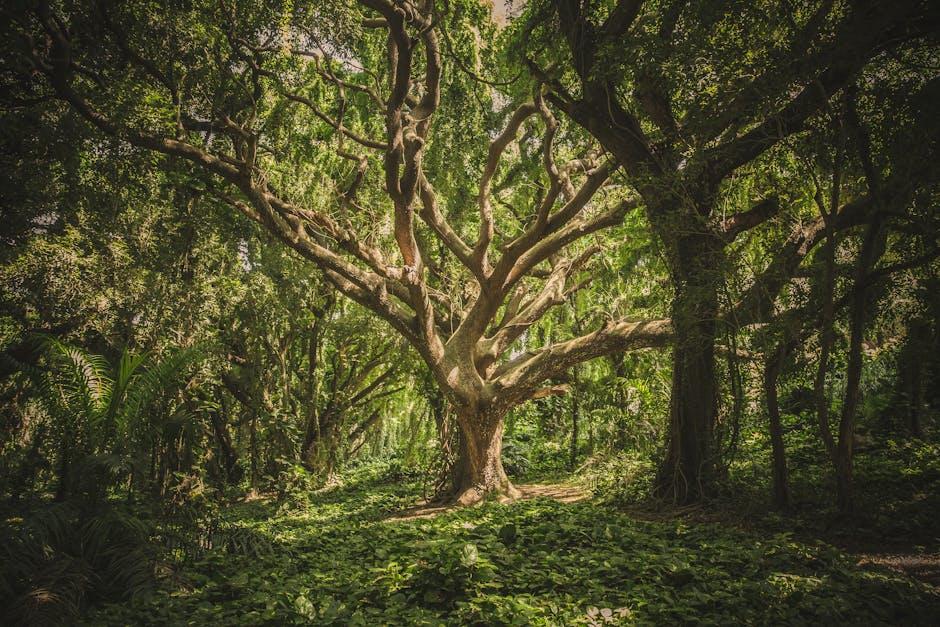Introduction:
Trees play a crucial role in sustainable development by offering a myriad of benefits to the environment and communities. From promoting health and social well-being to aiding in climate amelioration and conserving water, trees are integral to creating livable and sustainable societies. As such, understanding the significance of trees in sustainable development is paramount. This article aims to delve into the various ways in which trees contribute to sustainable development, exploring their impact on air quality, water conservation, soil preservation, and more. By exploring the multifaceted role of trees in sustainable development, we can appreciate their importance in shaping a more environmentally conscious and resilient future for all. To learn more about the benefits of trees for sustainable development, delve into the research and insights provided in [1][1], [2][2], and [3][3].
When it comes to sustainable development, trees play a crucial role in providing a multitude of ecosystem services that benefit both the environment and society. One key function of trees is their ability to act as carbon sequestration tools, absorbing carbon dioxide from the atmosphere and storing it in their biomass, helping to mitigate the effects of climate change [1]. Additionally, trees contribute to enhancing biodiversity by providing habitats for various plant and animal species, creating a healthier and more balanced ecosystem [2].
Through strategic tree planting initiatives, communities can actively participate in enhancing biodiversity and improving the overall health of their local environment. By carefully selecting tree species that are native to the area and promoting diverse plantings, communities can create thriving ecosystems that support a wide range of species and contribute to the preservation of natural habitats [3].
Moreover, engaging in tree conservation efforts at the community level can foster a sense of environmental stewardship and collective responsibility. By educating and involving residents in tree planting, maintenance, and protection activities, communities can build a strong bond with nature and work together towards a more sustainable future.
Lastly, the practice of agroforestry presents an opportunity to maximize the benefits derived from trees by integrating them into agricultural landscapes. Agroforestry systems combine tree planting with crop cultivation or livestock rearing, offering multiple benefits such as soil conservation, enhanced biodiversity, and increased food security [1]. By embracing agroforestry practices, communities can achieve a more sustainable and resilient food production system while also promoting environmental conservation.
Q&A
Q: What is the significance of trees in sustainable development?
A: Trees play a crucial role in sustainable development by providing a wide range of environmental, social, and economic benefits. They help mitigate climate change by absorbing carbon dioxide from the atmosphere and releasing oxygen through the process of photosynthesis. Trees also contribute to biodiversity conservation, soil preservation, and water management, making them essential for maintaining healthy ecosystems.
Q: How do trees support the achievement of Sustainable Development Goals (SDGs)?
A: Trees play a significant role in supporting the achievement of Sustainable Development Goals (SDGs) by contributing to various targets related to climate action, biodiversity conservation, poverty reduction, and sustainable land management. Through sustainable forest management practices and afforestation efforts, trees can help combat deforestation, promote sustainable agriculture, and improve livelihoods for communities dependent on forest resources.
Q: What are some examples of initiatives that highlight the importance of trees in sustainable development?
A: Several initiatives around the world emphasize the crucial role of trees in sustainable development. For instance, agroforestry practices integrate trees into agricultural landscapes to improve soil fertility, enhance biodiversity, and increase crop yields. Reforestation projects aim to restore degraded ecosystems and reduce the impact of climate change by planting trees in deforested areas. Additionally, community forestry programs empower local communities to manage and conserve forest resources sustainably, fostering environmental stewardship and economic development.
For more detailed insights on the role of trees in sustainable development, you can refer to the following sources:
1. [1]
2. [2]
3. [3]
Conclusion
trees play a crucial role in sustainable development by providing a multitude of benefits to our communities and the environment. From carbon sequestration to improving air and water quality, trees offer a wide range of advantages that contribute to creating healthier, more livable, and sustainable environments for all of us. Additionally, trees promote social well-being, encourage physical activity, and foster community ties, showcasing their importance beyond just environmental benefits. As we continue to strive for sustainable development, it is clear that trees are indispensable allies in our efforts to create a more resilient and harmonious society. To learn more about the numerous benefits trees bring to our lives, check out the articles on The Nature Conservancy[[[[[1]] and ResearchGate[[[[[2]].
Simpsons Tree Services, Servicing Melbourne’s North Eastern Suburbs
Book a quote online at www.simpsonstrees.com.au




